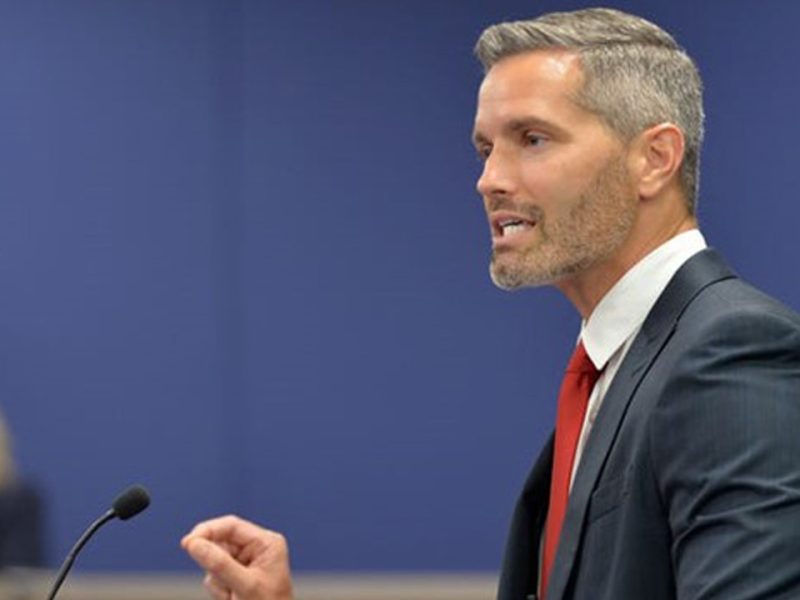Schools Pay a High Price for Low Teacher Salaries
EducationWeek | By Elizabeth Heubeck | July 8, 2021
Charles Carr has been teaching at Carol City Elementary since 2007. He said he fell in love with teaching early in his career, and is proud to work in Miami-Dade County’s Miami Gardens, the community where he grew up.
As one of only two full-time male teachers at his school, Carr is an important role model for his students, 77 percent of whom, like him, are Black. He also tutors his students for free after school—a support most students wouldn’t be able to afford at the Title I school where he works. But despite Carr’s commitment to his career, its financial downside creates ambiguity about his professional future.
“Almost on a weekly basis I think about doing something else because of the money,” he said.
Carr said he can support himself on his annual salary of $54,600 in the pricey South Florida area where he lives—a 35-minute commute to work—only because he’s single with no kids. The trappings typically ascribed to a successful mid-career professional remain out of reach for Carr. He would like to buy a single-family home, for instance, but with starting prices in his area around $400,000, he says that’s not feasible.
Recent statistics show that Carr’s situation is not unique. In a nationwide March 2021 survey of nearly 700 teachers conducted by the EdWeek Research Center, 57 percent of respondents said a salary hike would make a major difference in reducing their likelihood of leaving the K-12 teaching profession in the next two years. In recent years, teachers have acted on this impulse. From January through October of 2018, public educators quit at an average rate of 83 per 10,000 a month, the highest since 2001 when the U.S. Department of Labor began tracking this information.
President Biden’s recent assertions indicate his commitment to improving teachers’ financial circumstances. Last week, in his address at the 2021 National Education Association annual meeting, Biden pointed specifically to his $20 billion increase in the budget for Title 1 schools, which he said would prioritize educator raises.
In the meantime, teachers—who, according to recent data by the Economic Policy Institute, earn about 20 percent less than other professionals with similar experience—continue to face financial hardships.
Living on a low salary isn’t easy
Getting priced out of housing is one of those hardships.
This problem is particularly acute among beginning teachers, as evidenced by a USA Today analysis of 2017 Bureau of Labor Statistics data. In 278 of 291 metro areas analyzed, new teachers were unable to afford to rent a median-priced unit. In some of the priciest cities—including San Francisco, Napa, and Salt Lake City—beginning teachers would have to pay upwards of 90 percent of their salary to live where they work.
To compensate for low wages, many teachers take on second jobs. About 20 percent of teachers work second jobs outside of the school system, according to a recent report by the Center for American Progress. The same report noted that, in some states, that figure is as high as 25 percent.
Joy Jackson, who has spent the last 46 years teaching students with emotional disabilities in Miami-Dade County public schools, can relate. Earlier in her career, she worked at department stores to help pay the bills. Now she serves as a pastor at a community church, for which she makes a nominal amount of money. Jackson’s present teaching salary of around $75,000 doesn’t stretch far, especially since the untimely death of her daughter two years ago when she began caring for her two grandchildren. She’s also had to take a second mortgage to make repairs to her aging house. But Jackson’s financial challenges haven’t dampened her enthusiasm for her chosen profession.
“I love what I do,” said Jackson. “I’m good at it.”
Jackson describes the relationships she shares with her students as “awesome,” in spite of the concussions and broken bones she has suffered over the years at the hands of her students with emotional disturbances.
Asked if she would repeat her career decision again, Jackson said she likely would have started out in teaching, but she’s not sure she would have stayed as long. “Numerous have left because of the salary,” Jackson said. “More than that, many won’t come into the profession.”
An association makes a call to improve pay
Recognizing the consequences of low salaries on recruitment and retention, some advocacy groups are taking action. The North Carolina Association of Educators this summer spent six figures on a digital ad campaign urging state officials to boost funding for public schools, with an emphasis on teacher pay raises. It’s the association’s first such campaign in a number of years, according to Kevin Rogers, a spokesman for the association.
Rogers said the association would like to see a 10 percent teacher salary increase over the biennium, in line with what North Carolina Governor Roy Cooper has proposed. Nationally, North Carolina ranks 43rd in starting teacher pay and 33rd in average teacher pay after incorporating local supplements, which rural locales are far less likely to apply, explains Rogers.
“It’s taken us a long time to get where we are, and it will take us a long time to dig out,” he said.
In the meantime, the state’s public schools confront well over 1,000 vacancies at any given time, according to Rogers; currently, they face a shortage of substitutes as well. Rogers expresses optimism that the calls for increases in teacher salary will be heard.
“Every [state] public opinion poll has put this as a priority,” he said. “If we want our education to be good, we have to invest in it.”
Rogers’ message rings true for teachers. “Something has to change,” said Carr, the Miami Gardens elementary school teacher. “Or else I have to leave education entirely.”






